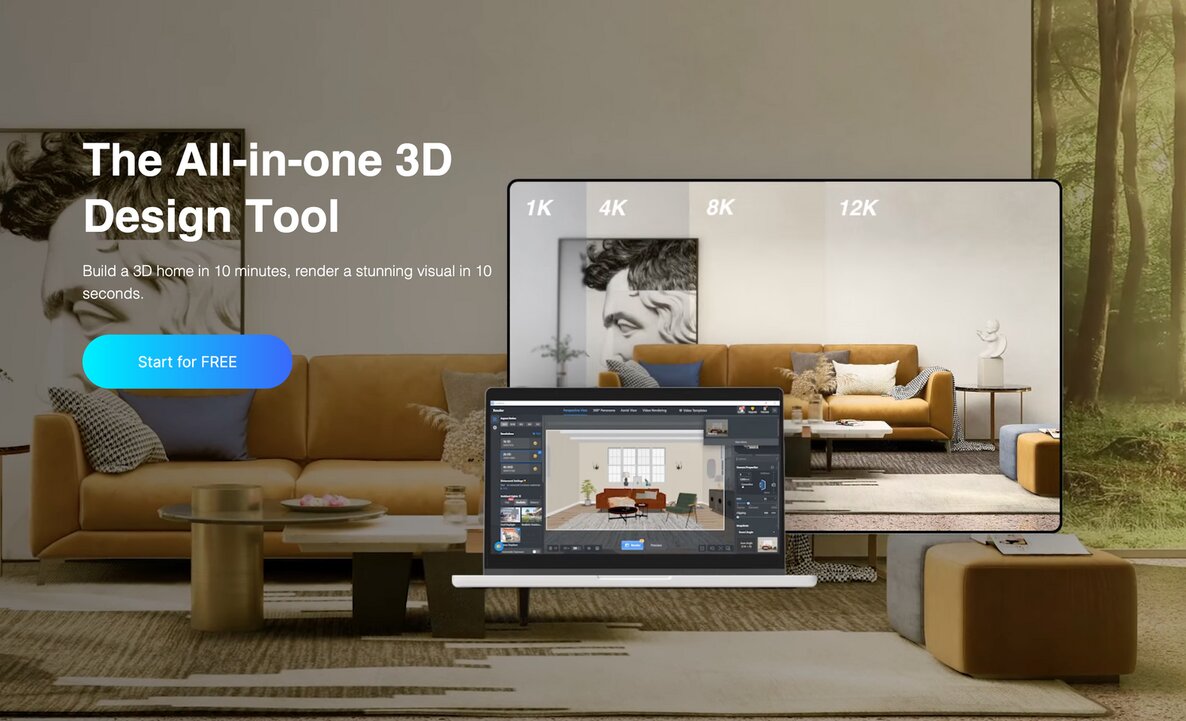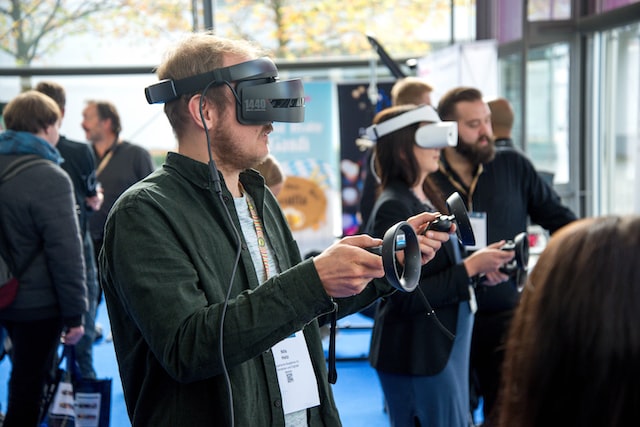
You’ve probably heard of VR (virtual reality), especially in the form of video games. AR (augmented reality) is lesser known but just as relevant. Both transform your reality by allowing you to experience a digital object or space and have been extremely beneficial for the construction, interior design, and home improvement industries.
These industries are using AR and VR technology in their smartphone apps, so you can build floor plans, measure rooms, and place potential new products inside your current space to see how they look. Imagine you plan to buy a couch but aren’t sure if it will fit or match your aesthetic. Your app measures the room before placing the sofa inside it. No need to drag out that measuring tape to do it manually; instead, AR and VR technology has your back.
This immersive shopping experience has led to a drastic drop in reported return rates. Apps also help create floor plans of a home or even advise on how to utilize a space best. Augmented and virtual reality is a major tool for home improvement, and people love how interactive and straightforward it is.
Table of contents:
Uses of VR and 3D Visualization Services in the Construction Industry
Construction & Virtual Reality – Where to Start?
Recommendations to Craft Personalized Interiors
AR Tools to Make the Pros Even More Creative
Useful Apps: The Future of AR-powered Home Decoration?
Using AR to Furnish Customers with Unforgettable Experiences
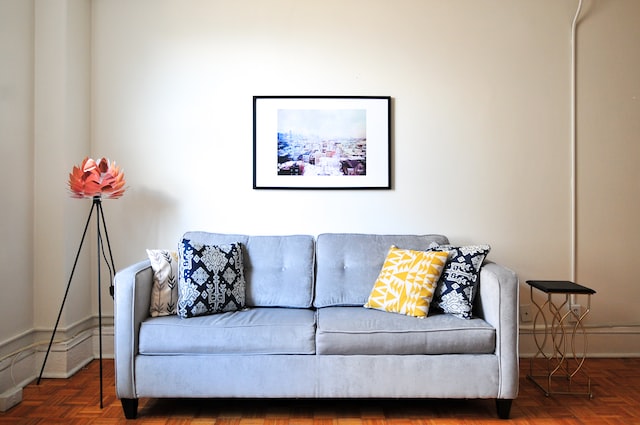
Uses of VR and 3D Visualization Services in the Construction Industry
The construction industry has found that VR and AR technologies improve their industry in several ways. From designing to marketing, renovating, or even training, this industry leverages AR to show people its products and renovations before construction begins.
Design Pitch
Architects and designers have found altered realities to be extremely useful in showing clients their intentions. These industries have always relied on various forms of concept art (drawings or 3D models on computers) to showcase plans to a client. Now, they can render the design into augmented reality, placing the design inside the room where the customer wants it.
Using this and similar technology that goes into Google Street View, clients can look at the potential designs from all angles within the room. While VR gaming requires an expensive headset, the same isn’t true for these VR and AR designs. Most computers can handle it, and soon smartphones will too. These new realities give customers more confidence than ever in purchasing.
Renovation Projects
VR technology is also creating significant advancements in home improvement. Companies are using it to map out job sites and troubleshoot logistics early on, such as ensuring large items (like pianos and bathtubs) can fit in a room or figuring out how to maneuver heavy machinery up large hills. It can also walk people through a job site so they can see the progress or envision what it will look like once built.
Safety and Training
It’s easier than ever to allow people to train in a virtual world. One place this makes a significant difference is in forklift training for warehouses. By placing people in virtual forklifts, they can go through a trial-and-error learning process safely without damaging themselves or the machines. This training applies across several sectors and can be used to train those in remote areas effectively.
Marketing Tools
VR and AR are popular tools in real estate marketing because they allow users to put themselves in their potential new homes. For any industry in sales, showing a customer the most accurate depiction of their large purchases increases sales and customer satisfaction. Fewer people make returns by filing complaints if they’ve seen their product in augmented reality first.
Construction & Virtual Reality – Where to Start?

VR is becoming more valuable as the industry grows, and it’s wise to consider how your business can improve. VR can help improve many things in the construction industry — from training to on-site planning and troubleshooting to design or sales.
Is VR Development Expensive?
VR can be expensive to develop. However, this high price can come with amazing benefits in the long term — such as increased customer satisfaction, fewer on-the-job accidents, troubleshooting problem areas early, and higher sales rates. If you’re considering developing VR for your business needs, remember you don’t need to go all-in immediately to make a big difference. Creating a 360-degree video is more cost-effective than a full training suite. Not everything in VR needs to be a fully enjoyable 3D game played with a headset. By tailoring your needs to your budget, you can enter the VR space with the confidence and wisdom needed to level up your business.
Improving Communication with Virtual Reality in Construction
VR improves communication in all construction industry sectors and should be your first focus when getting started. Using VR in concept and design, you can effectively communicate physical attributes and the overall job before boots hit the ground. Your clients will have a chance to weigh in, and you’ll solve a lot of headaches. Teams can discuss their progress and walk each other through their visions. Your project managers can use VR to manage jobs from anywhere they need to be, helping your company manage multiple projects smoothly.
Recommendations to Craft Personalized Interiors
Personalizing your living area can transform a space. You can shop for furniture, paint, wall décor, and even plants with AR. Without leaving the house to bring your vision to life, you’ll know it’s what you want before spending a dime.
Custom Furniture
One of the coolest ways VR and AR can assist your home is by creating custom furniture. Not only can you choose the aspects of your furniture to suit your wants (like size, material type, and color), but you can also place it inside your home through AR. From there, you can make changes to those aspects and make sure your custom furniture is perfect in your space.
Custom Art for Your Walls
While you’re visualizing your space via AR and VR, this is the ideal time to shop for art. One of the most challenging aspects of purchasing art is visualizing the work on your walls. With AR, you don’t have to dream it; you can see it yourself on your device. You might find that the colors clash unexpectedly or aren’t the correct size. Or, you might try a few different art pieces in that spot and be pleasantly surprised at which you like best.
Add Flowers or Greens
Art and furniture aren’t the only ways to decorate your interiors through digital innovation. You can do the same for greenery — from potted plants to flowers. This method is a great way to shop for different styles and sizes of plants, and you can also develop your vision.
Plants are great for indoor décor, as they add vibrant color to any space while promoting relaxation and calm. Many plants range from easy to difficult in terms of care. If your thumb isn’t green, it’s worth researching before purchasing that perfect plant.
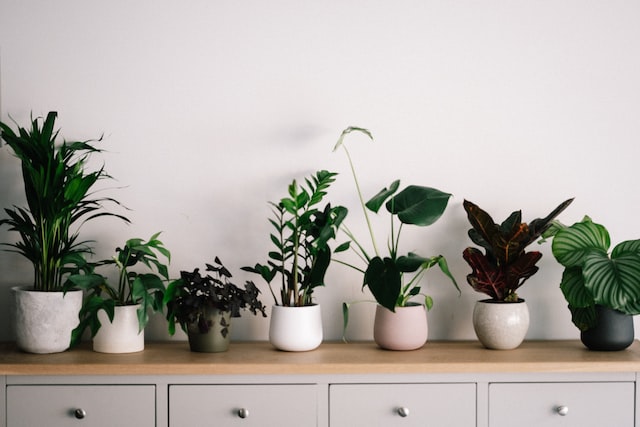
AR Tools to Make the Pros Even More Creative
Now that your eyes are open to the power of this emerging technology, you’re probably thinking about how to make it work for yourself. There’s a variety of apps and tools that can help you and your business enter the AR space.
How Can We Get Access to Those Apps?
Whether you work in construction, design, architecture, or marketing, AR can significantly help your industry. The best way to gain access is to contact VR consulting firms to discuss your vision and needs. A consultation with a few of these companies will give you an idea of what to budget for your AR or VR needs and what you can expect as you grow your business. Accomplishing your needs may vary in complexity, so be sure to ask what they recommend and why.
How does AR empower the highest levels of the home decor industry?
If you’re in the home design and decorating business, you’re familiar with CAD packages (computer-aided design and drafting) and may have been using them to bring your visions to life. Now, different apps like RoomSketcher combine the features of the best CAD software with the simplicity of a smartphone app. Roomle pushes this innovation further, using AR tools to automatically map room dimensions, so you can create a design for your space. As a result, everyone from rookies to high-level professionals can create detailed floor plans with minimal time and effort.
AR’s impact differs across customers and brands
VR has been making significant strides over the last decade. Thanks mainly to the gaming industry, which brings unique interactive experiences to people’s homes and provides a fantastic source for virtual tours, VR and AR tools cover an array of uses. Different clients and brands will have different needs, but AR’s comprehensive uses make it a diverse tool to be employed across several industries and sectors — all with positive results.
Useful Apps: The Future of AR-powered Home Decoration?
Join the foray into AR with these helpful apps:
- IKEA Place: When this app launched, it showed the world what augmented reality could do for customers and brands. It’s an excellent app that allows you to place all your potential IKEA furnishings into your room. This app is so effective it’s spurred many industries to adopt AR.
- Houzz: This is the perfect app for interior design. With it, you can view your room in 3D, have the program act like a digital assistant, and alter the space. Professionals use this app for home design ideas, shopping for materials, and finding experts.
- ARki: Import 3D renderings from CAD software and see them on location through AR.
- Dulux Visualizer: If you want to paint your walls, this app will do it virtually, so you can find the perfect color.
- DecorMatters: Not only can you place decorations in a room, you can also design the entire interior of your room and look up store recommendations.
- RoomScan Pro: An excellent app that creates 2D or 3D floor plans and blueprints.
- MagicPlan: An app to help you create room floor plans.
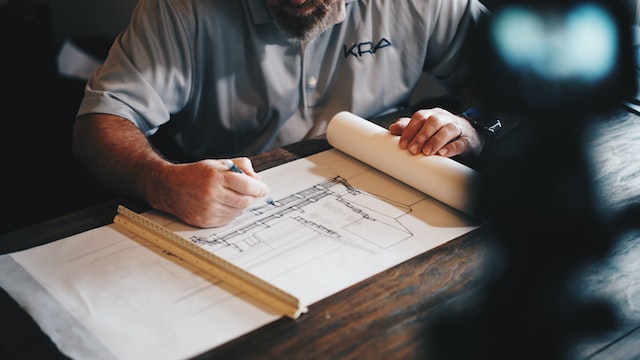
Using AR to Furnish Customers with Unforgettable Experiences
AR has all but taken over most steps of the design business, and it’s only growing with time. You can fully customize your AR experience from start to finish. In architecture, your planning will become a real, interactive work that customers can fully understand. You’ll map entire locations, and customers can walk through them like a showroom while seeing the space via their devices.
You have enhanced visualizers to showcase your work, and you can also use AR to train others and help wishy-washy customers land on a decision they love. AR provides customers with unforgettable experiences, as seen by increased retention rates and customer satisfaction, as well as reduced rates of returns and complaints.
Construction has also significantly benefited from AR for its end users. Potential buyers and investors can walk the breadth of the finished project digitally before laying the foundation. So much of home marketing is visualization, and the ability to provide something a customer can see and interact with in 3D boosts satisfaction. Your customers will love experiencing your work in AR, and soon you’ll wonder how you ever lived without it.
Contact marketing@coohom.com to get partnerships, and share more insights.
Social Contact:

